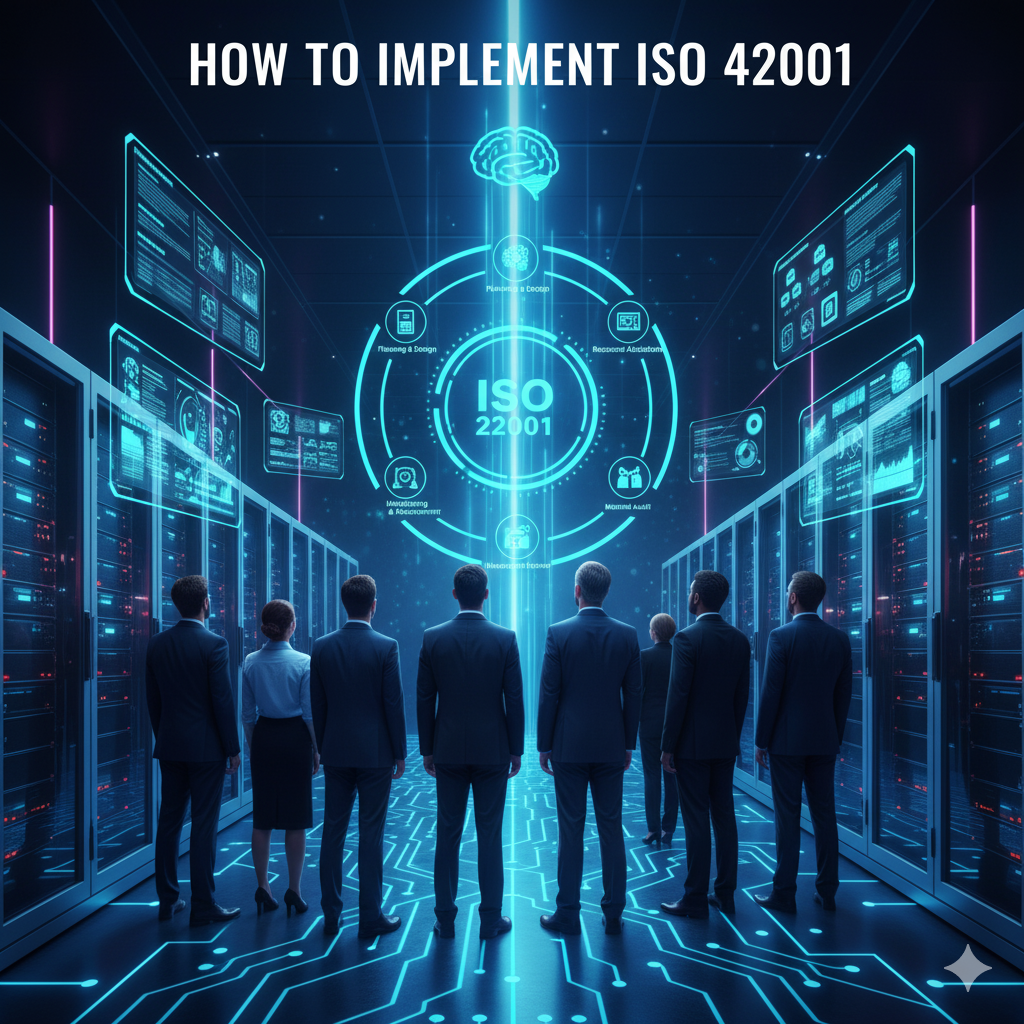ISO 42001 certification validates that an organization has implemented an effective Artificial Intelligence Management System (AIMS) according to international standards. The certification process involves establishing comprehensive AI governance frameworks, undergoing rigorous audits, and demonstrating continuous compliance with AI risk management requirements.
Getting certified requires months of preparation and implementation work. Organizations must build governance structures, document processes, and prove their AI systems operate safely and ethically. The process follows a structured approach with clear milestones and deliverables.
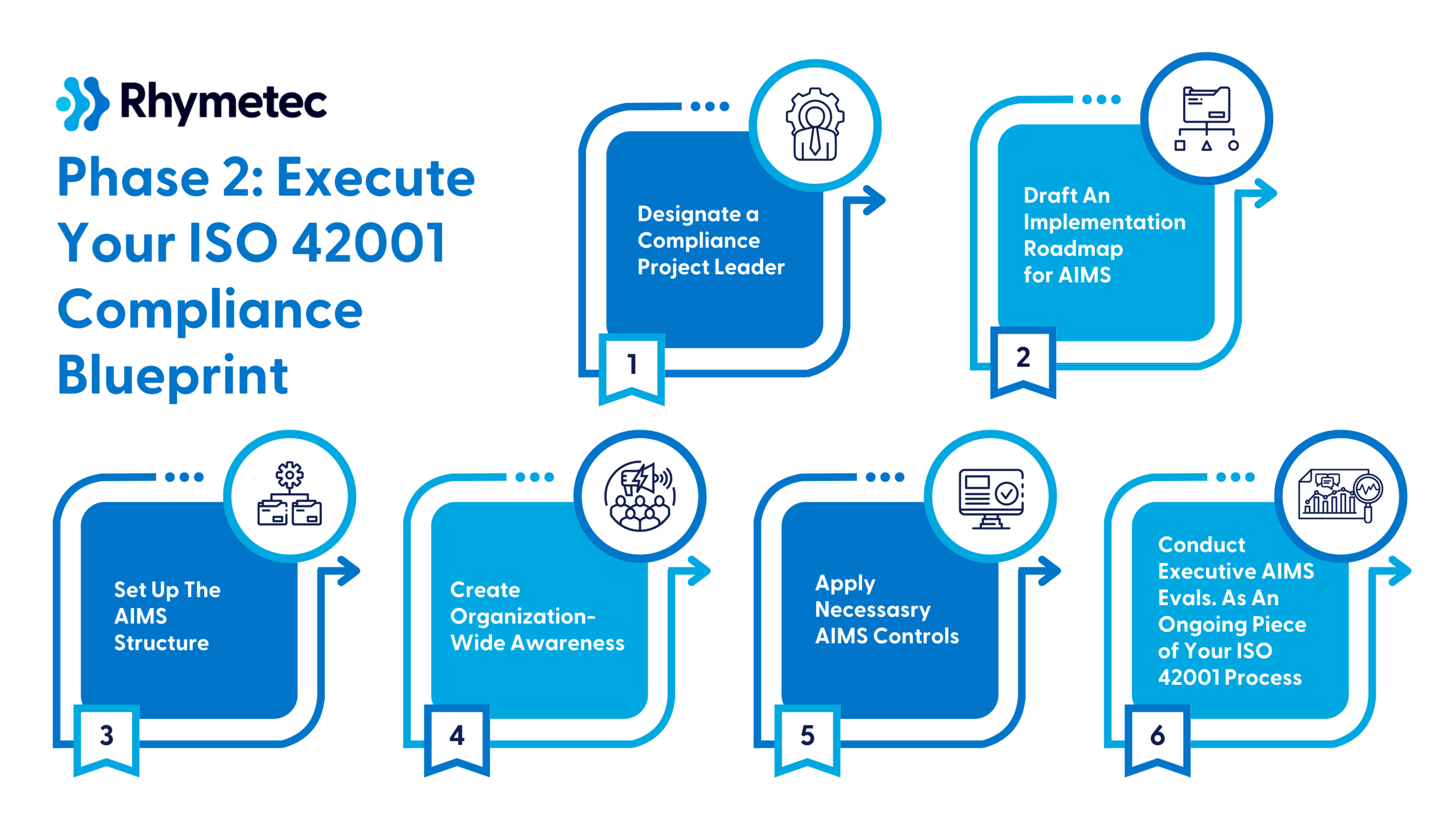
Source: Rhymetec
Most organizations complete the certification process within three to five months. The timeline depends on current governance maturity, AI system complexity, and available resources for implementation work.
What Is ISO 42001 Certification
ISO 42001 represents the world’s first international standard specifically created for managing artificial intelligence systems. The International Organization for Standardization released this standard in 2023 to address the unique challenges organizations face when developing and deploying AI technologies.
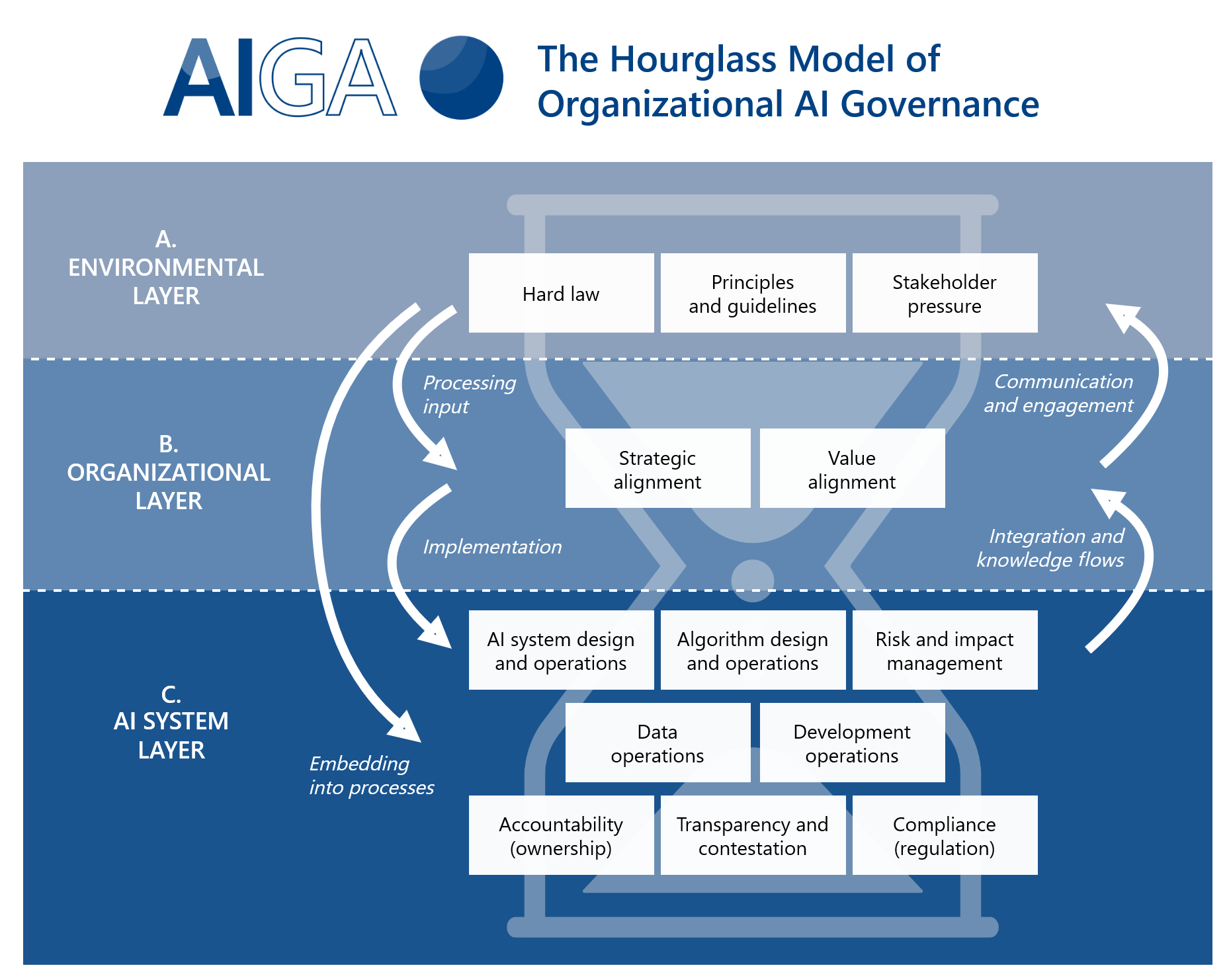
Source: AI Governance Framework
The standard establishes requirements for creating, implementing, maintaining, and continuously improving an Artificial Intelligence Management System within organizations. ISO 42001 covers the complete AI lifecycle, from initial development through ongoing operation and eventual retirement of AI systems.
Organizations that achieve ISO 42001 certification demonstrate that an independent third party has verified their AI governance frameworks. The certification confirms that proper controls exist to manage risks and opportunities associated with AI development throughout the organization.
Core Requirements of the Standard
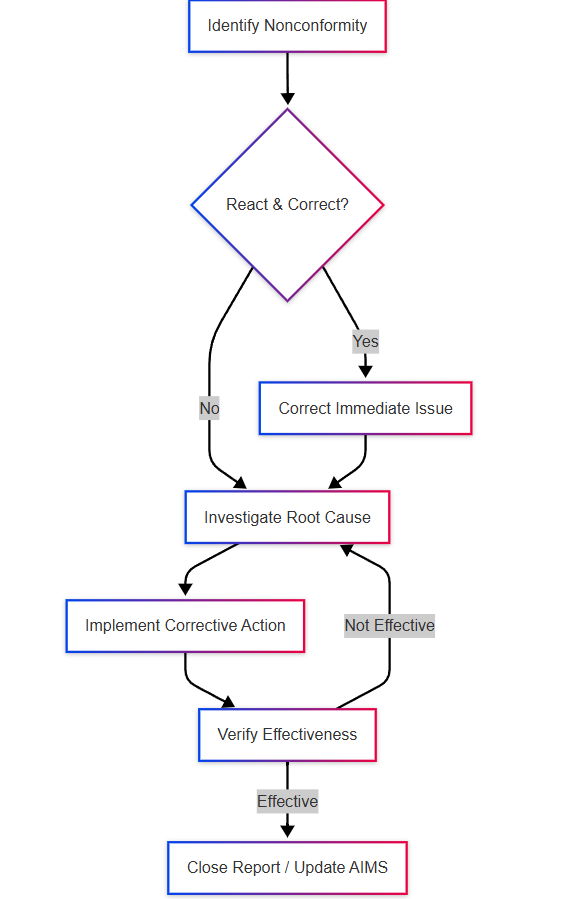
Source: Medium
ISO 42001 follows a ten-clause structure similar to other ISO management system standards. The standard requires organizations to understand their role in the AI ecosystem, whether as AI developers, users, or providers.
Organizations document their AI management system scope and identify all stakeholders affected by their AI systems. Risk management forms a central component, with comprehensive risk assessments examining security vulnerabilities, algorithmic bias, data quality issues, privacy violations, and potential societal impacts.
For AI systems that pose significant potential impact on individuals or society, organizations conduct separate AI Impact Assessments. The standard establishes continuous improvement requirements through regular monitoring, internal audits, management reviews, and corrective action processes.
Organizational Prerequisites and Readiness Assessment
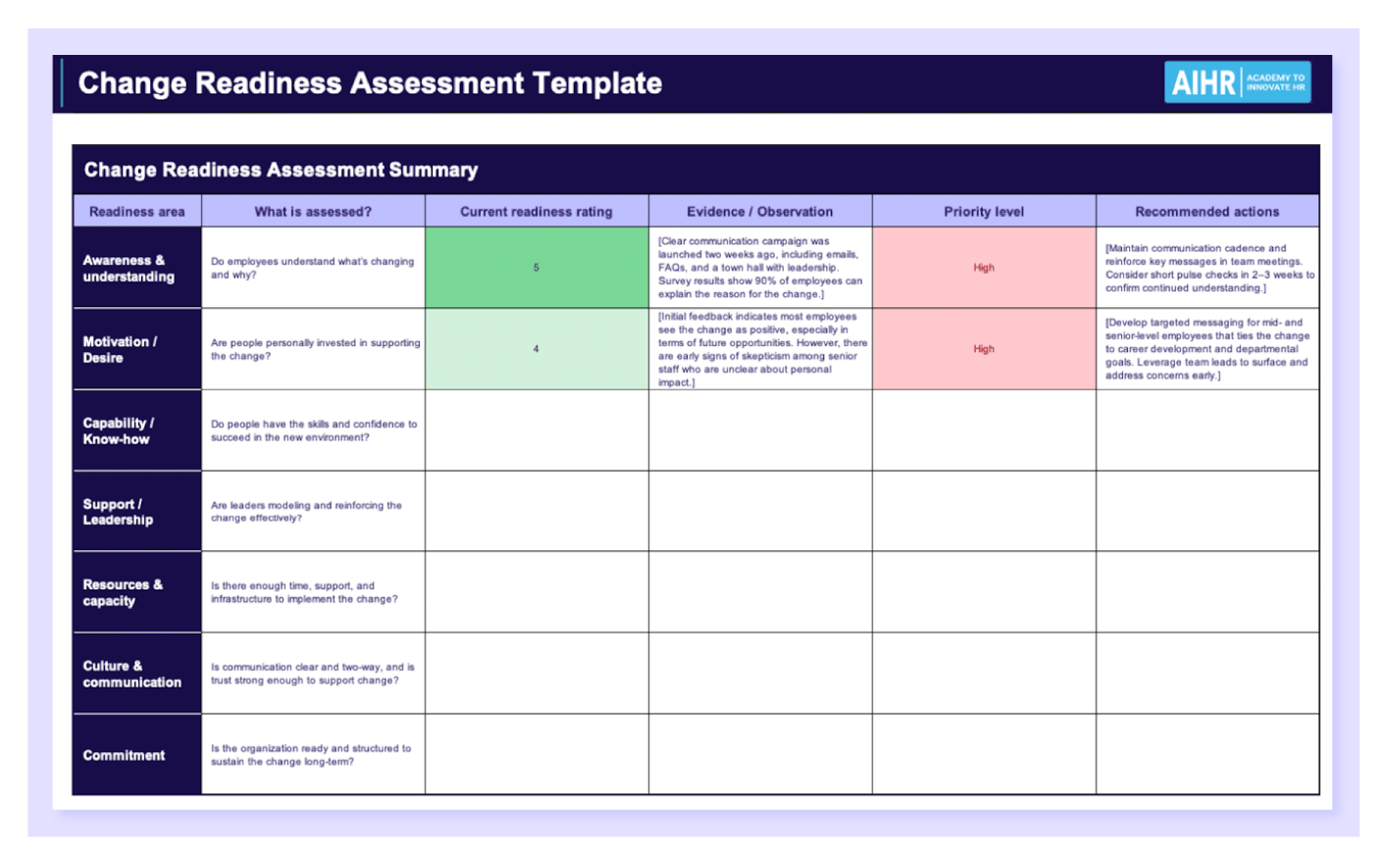
Source: AIHR
Before pursuing ISO 42001 certification, organizations require specific foundational elements in place. The certification process demands substantial organizational change, affecting how teams develop, deploy, and manage AI systems across the entire company.
Executive leadership bears ultimate responsibility for ISO 42001 compliance and governance effectiveness. Top management commitment extends beyond approving the certification project to actively participating in governance decisions and allocating necessary resources.
Leadership Commitment Requirements
Leadership commitment manifests through formal policy approval, regular governance committee participation, and resource allocation decisions. Without executive sponsorship, implementation teams lack authority to implement organization-wide changes required by the standard.
Budget considerations include personnel time, external consulting support, training programs, and potential technology investments. Organizations typically allocate 20 to 40 percent of one full-time employee across six months for moderate-complexity implementations.
Personnel allocation requires dedicated time from multiple organizational functions including legal, risk management, AI development teams, and business operations.
Gap Analysis and Team Building
Gap analysis systematically compares existing organizational practices against ISO 42001 requirements. Organizations establish cross-functional assessment teams including representatives from AI development, information security, legal, risk management, and business operations.
Assessment teams use structured evaluation methodologies, examining each standard requirement and documenting compliance status. The analysis examines governance documentation including AI policies, risk assessment procedures, incident response protocols, and management review processes.
Implementation teams typically include project managers, AI subject matter experts, compliance specialists, and external consultants when needed. Effective project managers understand both ISO management system requirements and organizational change dynamics.
Step-by-Step Implementation Process

Source: Office Timeline
Organizations pursuing ISO 42001 certification follow a structured five-phase approach. Each phase builds on previous work while establishing foundations for subsequent phases.
Phase 1: Establish AI Governance Framework
Organizations begin implementation by creating formal governance structures that oversee all AI activities. The first step involves forming an AI governance committee with representatives from legal, IT, risk management, business operations, and executive leadership.
The governance committee develops an AI policy document that defines organizational principles for AI development and use. The policy addresses fairness, transparency, accountability, security, and privacy requirements while establishing clear boundaries for acceptable AI applications.
Decision-making processes require formal documentation that specifies who has authority to approve new AI projects, modify existing systems, and respond to AI-related incidents.
Phase 2: Conduct Comprehensive Risk Assessment

Source: Amazon AWS
Risk assessment begins with cataloging all AI systems currently operating within the organization or planned for future deployment. Organizations document each system’s purpose, data sources, decision-making capabilities, and potential impacts.
The assessment examines risks across the complete AI lifecycle from initial development through eventual retirement:
- Technical risks — Data quality issues, algorithmic bias, security vulnerabilities, and system reliability concerns
- Operational risks — Inadequate training, insufficient monitoring, and poor change management practices
- Strategic risks — Regulatory non-compliance, reputational damage, and competitive disadvantages
For high-risk AI systems that significantly impact individuals or communities, organizations conduct separate AI Impact Assessments examining potential discrimination and privacy violations.
Phase 3: Develop Documentation and Procedures
Documentation forms the backbone of ISO 42001 compliance by providing evidence that governance operates according to established requirements. Organizations create an AI Management Manual that describes the overall governance approach and organizational context.
Operational procedures document specific processes for AI system development, testing, deployment, monitoring, and retirement. Each procedure specifies responsible parties, required activities, approval criteria, and documentation requirements.
Control mechanisms require documentation that explains how each selected control operates and what evidence demonstrates effective implementation.
Phase 4: Implement Management Controls
Control implementation translates documented procedures into operational practices across the organization. Monitoring systems track AI system performance, identify emerging risks, and provide early warning of potential failures.
Review processes establish regular evaluation schedules for AI systems and governance procedures. Internal audits examine whether documented procedures are actually followed and whether controls produce intended results.
Change management controls ensure that modifications to AI systems follow established approval processes and maintain appropriate documentation.
Phase 5: Training and Competence Development
Training programs address different roles and levels of involvement in AI governance across the organization. Executive leadership receives awareness training covering governance principles and strategic responsibilities.
Organizations document competency requirements for key governance roles including AI system owners, risk assessors, and internal auditors. Training records demonstrate that personnel have received appropriate preparation for their governance responsibilities.
Competence demonstration extends beyond initial training to include ongoing development through mentoring and specialized certification programs.
Essential Documentation Requirements

Source: ins2outs
Preparing for ISO 42001 certification requires assembling a comprehensive documentation package that proves your organization has implemented effective AI governance. Auditors evaluate both the existence of documented procedures and evidence that these procedures actually work in practice.
Mandatory Documentation
ISO 42001 certification requires specific core documents that demonstrate systematic AI governance implementation:
- Management System Documentation — AI Management System manual, organizational context analysis, Statement of Applicability, and approved AI policy
- Operational Procedures — AI system lifecycle management, risk treatment procedures, impact assessment procedures, and incident response protocols
- Governance Records — Risk registers, treatment plans, roles and responsibilities documentation, and training records
- Performance Documentation — Internal audit reports, corrective action logs, performance metrics, and continuous improvement evidence
The documentation demonstrates that governance extends beyond policy statements into operational reality.
Evidence Collection Strategies
Evidence collection begins with identifying what proof auditors need to verify compliance with each ISO 42001 requirement. For governance processes, evidence includes meeting minutes, decision records, and approval documentation.
Organizations maintain chronological records linking risk assessments to treatment decisions to implementation activities. These trails demonstrate that governance follows documented procedures and produces intended results.
Digital evidence collection systems help organizations track governance activities automatically. Version control ensures evidence reflects current organizational practices rather than outdated procedures.
Two-Stage Certification Audit Process
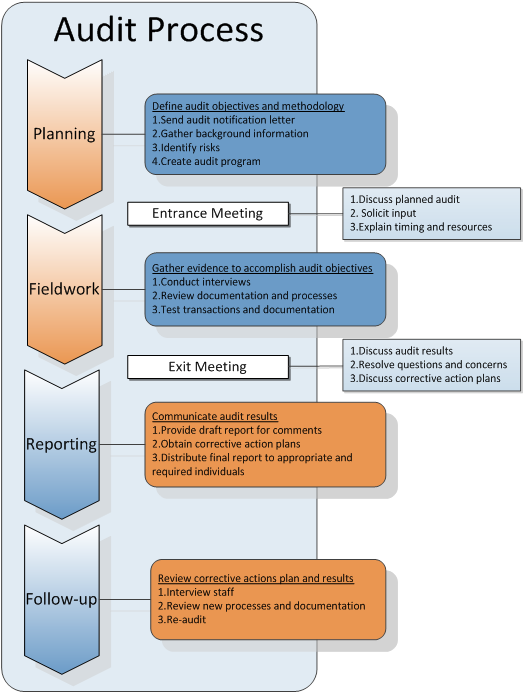
Source: Internal Audits – University of Texas at Austin
Organizations pursuing ISO 42001 certification undergo a structured two-stage audit process. The process separates design assessment from operational verification, allowing auditors to evaluate governance frameworks before examining their practical implementation.
Stage 1: Document Review
Stage 1 auditors conduct a desktop review of organizational documentation to assess AI Management System design and certification readiness. The audit typically spans one to two days, depending on organizational size and scope complexity.
Auditors examine core documentation including scope definition, organizational context analysis, leadership policies, and risk assessment methodologies. They verify that the AIMS scope clearly defines which AI systems fall within certification boundaries.
The audit team interviews senior management to confirm executive understanding of governance requirements and commitment to implementation. Organizations typically receive four to twelve weeks between Stage 1 and Stage 2 audits to address identified issues.
Stage 2: Implementation Verification
Stage 2 audits examine whether the organization’s AIMS operates effectively and produces intended governance outcomes. The audit typically requires three to nine days, with duration determined by organizational size and scope complexity.
Auditors interview personnel across the organization including system owners, developers, data stewards, and risk managers. These interviews assess whether documented governance processes are followed in practice.
The audit team examines evidence demonstrating governance implementation including risk assessment documentation, impact assessment reports, governance committee meeting records, and training records. Auditors evaluate whether selected controls have been implemented and operate effectively.
Timeline and Budget Planning
Planning for ISO 42001 certification requires understanding both the time investment and financial commitment involved. Organizations typically complete the journey from initial gap analysis through certification in three to five months.
Timeline by Organization Size
Source: Microsoft Learn
Small organizations with fewer than 50 employees often complete certification in eight to twelve weeks when leadership commits adequate resources. Medium-sized organizations typically require twelve to twenty weeks due to multiple departments and coordination challenges.
Large enterprises with over 500 employees often require twenty to twenty-six weeks due to coordination challenges, legacy system integration, and extensive documentation requirements.
Organizations with existing ISO 27001 or other management system certifications typically complete ISO 42001 implementation approximately four weeks faster through leveraging existing governance infrastructure.
Cost Considerations
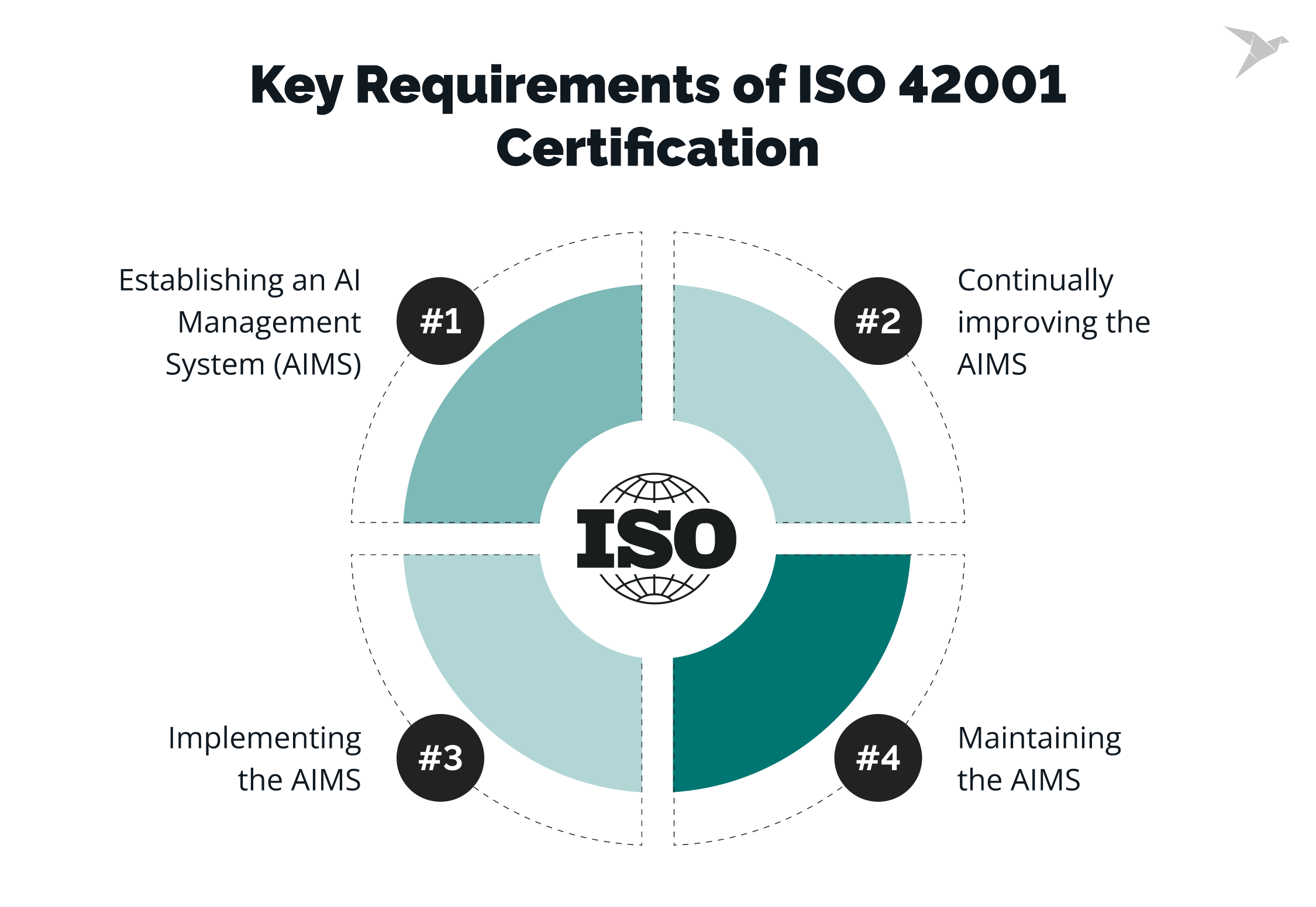
Source: TechMagic
ISO 42001 certification involves several cost categories. External consulting fees for expertise typically range from fifteen thousand to seventy-five thousand dollars for medium-sized organizations.
Certification audit fees depend on organizational size and scope complexity. Certification bodies often provide package pricing for the complete three-year certification cycle including surveillance audits.
Internal resource costs represent the largest expense category. The AIMS owner typically requires fifteen to twenty-five hours weekly throughout implementation, while technical teams contribute five to ten hours weekly during control implementation phases.
Post-Certification Maintenance
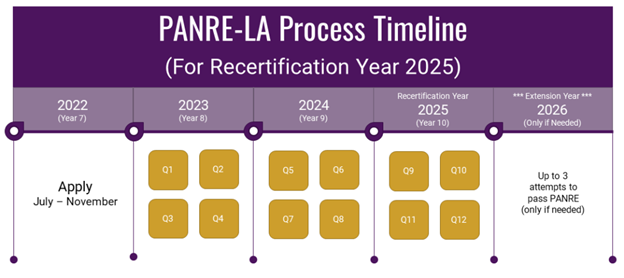
Source: NCCPA
Achieving ISO 42001 certification marks the beginning of ongoing compliance obligations. Organizations maintain their Artificial Intelligence Management System effectiveness throughout the three-year certification period.
The certification body conducts surveillance audits at twelve-month intervals during years one and two. These audits verify that the organization continues operating its AIMS according to documented procedures.
Annual Surveillance Process
Surveillance audits typically require one-third the time of the original certification audit. Auditors focus on operational effectiveness rather than examining every control in detail.
Organizations prepare for surveillance audits by maintaining current documentation and collecting evidence of governance activities. Internal audits conducted before surveillance visits help identify potential issues.
Management review meetings provide executive oversight of AIMS performance, examining audit results, performance metrics, and emerging risks that might affect governance requirements.
Recertification Requirements
The three-year certification cycle concludes with a comprehensive recertification audit comparable in scope to the original assessment. Organizations typically begin recertification preparation six months before the current certificate expires.
Recertification audits recognize that organizational circumstances change significantly over three-year periods. Organizations demonstrate continuous improvement throughout the certification period through evidence of systematic governance enhancements.
Integration with Existing Management Systems
Organizations that already operate under ISO standards like ISO 27001 or ISO 9001 can build upon their existing governance infrastructure when implementing ISO 42001. The standards share common structural elements and management principles.
ISO 27001 and ISO 42001 overlap in several governance areas including risk assessment processes and incident response procedures. Organizations with ISO 27001 certification can adapt existing risk assessment frameworks to address AI-specific risks.
Quality management systems provide foundational process management capabilities that support AI governance. Document control procedures and management review processes can be extended to cover AI-specific governance requirements.
Strategic Implementation Support
Implementing effective AI governance requires specialized expertise that spans technical, legal, and strategic domains. Organizations pursuing ISO 42001 certification often benefit from partnering with consultants who understand both the regulatory landscape and practical implementation challenges.
Strategic AI consulting firms bring comprehensive approaches that address multiple dimensions of governance implementation. This includes AI strategy development, ethics framework design, compliance planning, and technical implementation support.
Experienced consultants understand how to integrate AI governance with existing management systems, avoiding duplicative efforts while ensuring comprehensive coverage of AI-specific requirements. They provide guidance on stakeholder engagement and change management elements that determine governance success.
Frequently Asked Questions
What’s the typical cost for ISO 42001 certification for small organizations?
Small organizations with simple AI implementations typically spend fifteen thousand to thirty thousand dollars for complete certification. This includes consulting support ranging from five thousand to fifteen thousand dollars, certification body fees of eight thousand to fifteen thousand dollars, and internal personnel time representing the largest cost component.
Small organizations often complete certification faster than large enterprises due to streamlined decision-making and fewer organizational complexities. Organizations with existing governance frameworks can reduce total costs by twenty to thirty percent through leveraging existing infrastructure.
Can organizations using only third-party AI services achieve certification?
Organizations primarily consuming third-party AI services can achieve ISO 42001 certification through careful scope definition and governance focused on AI system selection and oversight. The standard applies to all organizations using AI systems regardless of development approach.
Governance for third-party AI services emphasizes vendor management, risk assessment, and oversight rather than internal development controls. Organizations establish processes for evaluating AI service providers and monitoring ongoing service performance.
How does ISO 42001 differ from the NIST AI Risk Management Framework?
ISO 42001 establishes a certifiable management system standard requiring specific organizational structures and documented policies. Organizations can achieve independent third-party certification through formal audits.
The NIST AI RMF provides voluntary guidance organized around four core functions without prescribing specific organizational structures. Many organizations use both frameworks together, employing ISO 42001 for governance structure while using NIST guidance for operational risk management activities.
What happens if an organization fails the initial certification audit?
Organizations receiving nonconformities during certification audits complete corrective action processes before certification can be granted. The process begins with root cause analysis identifying underlying reasons for governance failures.
Organizations develop specific corrective actions addressing root causes with defined timelines and success criteria. Following implementation, organizations submit evidence demonstrating resolution of all nonconformities. Upon successful resolution, certification bodies issue ISO 42001 certificates valid for three years.


